Kevin Bergquist and Katie Gazella
Many employees were recognized this year for serving the University for several decades, including one employee who reached her half-century mark at U-M. The University’s development and growth have depended upon the contributions made by staff members.
It is said the success of any organization can be measured in part by the effectiveness of the personnel who choose to remain and grow with it.
Short biographies about the 50-, 45- and 40-year employees follow.
Service Awards: 10 years>
Service Awards: 20 and 30 years>
All photos by Paul Jaronski, U-M Photo Services.
50 years
Nancy Bates, administrative associate, LSA Outreach Services
Nancy Bates considered retiring a couple of years ago, but she decided she wasn’t ready to leave just yet. Instead, she moved from her position as key administrator in the Department of Psychology to a 60-percent appointment as an administrative associate with LSA Outreach Services.
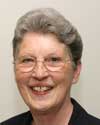
When she began at the University 50 years ago, Bates worked on a Royal Standard typewriter, then considered state-of-the-art. The University also was much smaller during that time, both in the number of buildings and the student population.
Bates has distinct memories of the tensions on campus during the McCarthy era in the 1950s. During the 1960s, she says, “I remember [then-President] Robben Fleming sitting outside the administration building, talking to the protesting students” and trying to calm the unrest on campus.
Bates still enjoys working, but she says her part-time schedule allows more time for her Welsh Corgi, five Labradors, and a mixed-breed she and her daughter found recently. They are hoping to find its owner, but if they don’t, they’ll add the seventh dog to the kennel she and her daughter had built at their house.
45 years
Janice (Jan) Eckert, unit liaison coordinator, Michigan Administrative Information Services (MAIS)
In her 45 years at U-M, Jan Eckert always has worked around people and projects that interest her. She began as a secretary at the Willow Run Laboratories, then became an administrative associate and administrative manager in the Director’s Office of the Institute of Science and Technology. Her responsibilities included overseeing the budget, human resource and research administration processes.
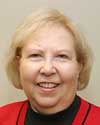
She worked there during times of tremendous innovation, including much of the space race.
Before joining MAIS, she worked at the School of Social Work where she managed the Life/Education Planning Program funded by the UAW-Ford National Education Development Training Center.
Now, as unit liaison coordinator at MAIS, she is involved in providing a communications link between MAIS and units on campus. This entails the use of always-changing technologies.
“The University offers a very diverse workplace in which we have many opportunities to keep up with what is new in the world,” she says. “To me, it’s just as exciting today to be learning something new as it was in 1958.”
In her spare time, the Dundee resident travels, including four times with the People to People Citizen Ambassador Program. She recently won a “Most ABLE” award from Operation ABLE in recognition of her contributions to the University.
40 years
Susan Bareis, administrative assistant II, Office of Evaluations and Examinations
Susan Bareis’s relationship with U-M started much earlier than her hire date. You could say the life-long Ann Arborite always has been proud to be a Michigan Wolverine.
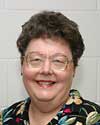
“We grew up in the shadow of the Stadium,” Bareis says. “And one of my first memories is of the people arriving for games on the trains. People dressed so differently then—they actually dressed up for the games. I remember the women with their big yellow mums in their lapels.”
Just out of high school, Bareis started in the Department of Pathology as a clerk typist. She soon became an assistant in a research director’s office and stayed for about 12 years. Then she transferred to the Center for Research on Learning and Teaching, from which she retired in 1999. In 2000 she accepted an offer to return part-time in the Office of Evaluations and Examinations, where she performs personnel and financial duties.
Her outside interests include an Ypsilanti antique store she co-owns with her sister. She also has taught ballroom dancing since the 1980s.
“To work at the University of Michigan has always been a source of pride,” she says. “All of the learning opportunities, especially computer skills, even M-Pathways—I like it all. Especially the football.”
Judy Baughn, project associate, Survey Research Center, Institute for Social Research
Judy Baughn’s career at U-M began in 1963 after a recruiter visited her small college in the Upper Peninsula. Her first secretarial position paid $3,600 a year at the School of Education.
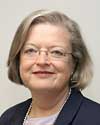
Baughn later accepted a position at the Survey Research Center (SRC) at the Institute for Social Research (ISR), where she worked with Sidney Cobb and Stan Kasl. After marrying and having her first child, Baughn reduced her work effort and returned to ISR for a position with Pat and Gerry Gurin.
She left SRC for a half-time research secretary position at the Neuroscience Laboratory working with Elliot Valenstein. She later added another half-time position as an academic secretary at the Center for Afroamerican and African Studies. She worked with Professor Ali Mazrui to help produce a series called “The Africans” for BBC. “That was a very exciting highlight of my career,” she says.
She returned in 1986 to SRC, this time to the Family and Demography Program to work with the program director, Arland Thornton. She continues there today.
Her interests include her family: her husband, Don, whom she met when he crashed her 21st birthday party, children Kevin (Donna) and Kristy, and grandchildren Robyn, Emily and Justin. She also sings in the Livingston County Chorale with one of her grandchildren.
LaVerne Brewer, nurse aide III, UMHS
Having a great time and believing “life is what you make it,” LaVerne Brewer enjoys working with people as a nurse aide III in the Operating Room holding room at the University Hospital.
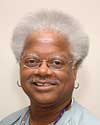
Brewer, who has been at her current post since 1991, says talking with patients and making them laugh and feel better before they enter the operating room is important to her. Brewer, a Romulus resident, came to the University in 1963 as a nurse aide on floor 6W of the Old Main Hospital. She left the hospital in 1970 and spent 16 years working in various printing centers around campus. She returned to the hospital in 1986.
“If you enjoy people and what you are doing, you can make it a loving environment,” Brewer says. “Some people don’t enjoy going to work, but I love it.”
Brewer, originally from Florence, Ala., is active with Pilgrim Travelers Baptist Church in Inkster. She graduated from the Detroit Institute of Commerce in 1962 and worked briefly in downtown Detroit.
“But I don’t like business,” she says, laughing.
Donald Carter, staff pharmacist, Cancer and Geriatric Center Infusion Pharmacy
When Donald Carter came to U-M, he already had worked for 10 years as a retail pharmacist in Ohio. But he decided he wanted to pursue another degree, and a change.
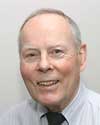
“I had the feeling that the hospital pharmacy would offer more satisfaction from a professional and personal standpoint. And I found that to be true,” he says.
Carter earned a pharmacy master’s degree in 1966.
“I’ve had the opportunity to do a lot of different things in the pharmacy field since I’ve been here. That’s something I’ve always appreciated,” he says. He’s worked in the pharmacy laboratory, satellite pharmacies and in the drug information office.
In 1996 Carter retired for about seven months but decided he wasn’t ready to stay home and came back to work just prior to the opening of the new Cancer and Geriatrics Center. “I guess you could call work my hobby,” he jokes.
His family is a great source of pride. His three sons have advanced degrees, and Donald’s wife, Marjorie, started college at 35, finishing her Ph.D. in analytical chemistry 20 years later.
“I’m pleased that I moved here, because all my family went to school here,” he says.
Mary Donald, instrumentation processor, UMHS
The materials and supplies constantly are changing, but Mary Donald enjoys every day she comes to work as an instrumentation processor at Material Services in the University Hospital.
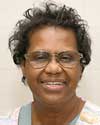
Donald began working at the University in 1963 at Old Main Hospital. She also worked in the pharmacy before moving to Material Services. There, she worked with another 40-year University honoree, LaVerne Brewer.
Donald says long-time co-workers like Brewer help make her position enjoyable.
Donald, from Inkster, does not mind getting up for her 5:30 a.m.-2 p.m. shift at the hospital. She is responsible for taking inventory of many different kinds of procedural trays and re-stocking them. There are too many different kinds of trays for Donald to recall, she says.
Her husband, John, is retired from Great Lakes Steel in Ecorse, but Mary has no plans for her own retirement.
“My health is good, and I love coming to work every day,” she says, adding that summer is great for coming in early. “The work is very interesting, and I learn a lot here.”
Glenn Evers, senior computer operator, MAIS
Glenn Evers was a computer operator at the University before there were computers at the University. Shortly after he arrived at DSC (now known as MAIS), the unit got its first mainframe computer.
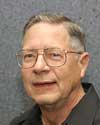
“It was an IBM 1401 with 4K of memory in it,” Evers says. “It was one box with a tape drive hooked to it. We upped the memory to 16K. And on this we ran all University accounting, payroll and student registration.”
As an operator, Evers became handy with IBM punch cards used to run the equipment. Operators took a deck of cards with the instructions and ran them through the mainframe computer. Even as faster and easier systems came on-line, the control cards remained a fixture for many processes for decades.
Through the years, he says, “The technology changed and my job changed—that made work interesting. I was in the same room every day for 40 years, nine months, 18 days, and I never got bored. Now that’s a career.”
Evers enjoys spending time with his wife, Barbara, his daughter, Cynthia, and the family of his son, Ronald. He also enjoys developing a family Web site and developing a book of his family’s histories.
Janet Holbrook, administrative assistant II, Division of Kinesiology
June 1963, just one week after her graduation from High School in Manchester, Holbrook began her career at the University as a secretary C3 in the Office of the University Architect.
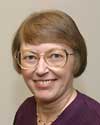
“Typing up notes from the planning meetings, I really saw how the University was growing,” she says. “And I liked that I had the opportunity to grow with it.”
Holbrook moved to the Construction Office, then to Medical Center Planning, during which time she earned promotions to secretary C5. In 1973, she joined the Division of Kinesiology.
“I didn’t intend to work here for so long, but I found I liked the people,” Holbrook says. “I even decided not to pursue any more promotions because I like my current interactions with faculty, staff and students as an administrative assistant II. It’s my way to help make Kinesiology a little bit better.”
Early in her career, Holbrook earned her associate’s degree from Washtenaw Community College. She also took computer classes in the early 1980s to prepare for the changing technologies.
Outside the University, Holbrook enjoys reading, long walks, cooking, baking and spending time with her husband, Bruce, and daughter, Alice. Holbrook plans on retiring at the end of March to help Alice prepare for her college experience.
Linda Kittel, office assistant III, Property Disposition
Imagine the biggest garage sale you’ve ever seen. Multiply it by 10, add mounds of office furniture, computers, exercise equipment and more, and then stick it inside a huge warehouse. Now you’re starting to get the picture of Property Disposition. And the woman who has had a big hand in running it for more than three decades is Linda Kittel.
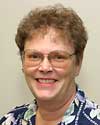
Kittel started in Purchasing, then moved to Property Disposition in 1968. “I’m still here and have enjoyed every minute of it. I’ve met a lot of wonderful people at U-M,” she says.
As office assistant III, Kittel does the bookkeeping at Property Disposition. She reconciles daily and monthly sales, arranges deposits and answers a never-ending stream of questions. One of her favorite responsibilities is passing along the good news to the highest bidders.
“We do a lot of sealed bids on the unique items. One time we sold an airplane from the engineering school. Another time there was a gem and mineral collection from one of the museums. And antique rifles from another museum,” Kittel says. “Those were interesting things to see. But it’s meeting the people that has interested me most all these years.”
In her spare time, Kittel loves camping, fishing, and being with friends and family.
Robert Koyle, steamfitter and plumber, Plant Operations
Robert Koyle works as a steamfitter in the University’s hospital buildings four days a week and a plumber on Sundays. Koyle says he is busy all the time, and rarely is there a slow day on the job.
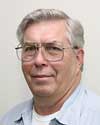
“Because there is no steamfitter ahead of me, I have had to figure everything out on my own,” he says. “It has been a nice little challenge.”
Koyle, from Milan, began working in Old Main Hospital in 1963 and says moving to the new hospital facilities brought more challenges.
“Back when I started here, the numbers [of maintenance workers] were smaller, and you gave everyone a hand if they needed it. It didn’t matter what your trade was—a steamfitter, plumber or electrician,” he says. “When you stop and think about [40 years], gosh, it has gone fast.”
Koyle enjoys riding his new Honda VTX motorcycle. He frequently rides with his son, Ken. Besides being a source of relaxation, Koyle says it frees up a parking space for others in cramped hospital parking areas.
JoAnn O’Connor, office assistant IV, Department of Microbiology and Immunology
JoAnn O’Connor remembers when her first boss at the University interviewed her for the position. “He said, ‘How many years do you plan on working?’ And I said, ‘Oh, two.'” That was 40 years and a number of bosses ago.
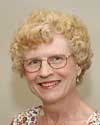
“I enjoy working, and I plan to work five more, then call it a career,” she says.
O’Connor has spent 31 of those 40 years in the Medical School area, starting in the accounting annex of the old hospital where she did numerical filing.
“I liked that so well that I just kept moving up, and now I work with big figures,” she says.
In her current position, O’Connor manages several grants and accounts, which are “like a big checkbook.” She adds, “I like the challenge of getting everything to balance.”
One of the innovations O’Connor appreciates most is the computer.
Outside the office, she likes to bowl, take care of the lawn and her poodle, and travel. “In the last 20 years I’ve gone on about two cruises a year,” she says. “It’s the only way to go.”
Jim Pluta, laboratory demonstrator, Physics Department
Jim Pluta began at the University as an electronic technician in the Physics Department.
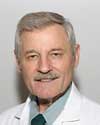
In his 25 years in that position, he worked on experiments that professors and graduate students came up with, including those dealing with high-energy particle physics.
He then moved on to be a laboratory demonstrator in the introductory physics teaching labs, a position he has held for the past 15 years.
In his job, Pluta sets up labs, solves problems and repairs broken equipment. Much has changed in his 40 years, including the technology used in laboratory experiments. For instance, in free-fall experiments, sonar now is used to track the trail of a weight as it falls in a measurement of the force of gravity.
Pluta lives in Ann Arbor. His children, grandchildren and new great-grandchild live in Ypsilanti, Fenton, Brighton and Jackson.
In his spare time, Pluta is an amateur radio operator with the call letters W8MNN. “I’m able to communicate with friends all over,” he says.
Kay Schmenk, undergraduate admissions
Today, the phrase U-M Gateway conjures images of the University’s Web site. But for thousands of young adults every year, the real gateway is the Undergraduate Admissions Office. And Kay Schmenk has attended to those metaphorical maize gates for more than 40 years.
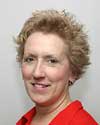
“I’ve been in the same department, with different positions for so long because I love helping people. Simple as that,” Schmenk says.
Beginning as a clerical 5, she worked with transfer students. She also evaluated freshman applications and early admissions with counselors. For roughly 20 years, Schmenk was the supervisor of data entry. She stepped down from her supervisory role to have more work flexibility and to enable her to help her husband with farming.
“Now I’m working with transfer students doing evaluations again, which is like coming full circle. It’s a smaller group than freshmen, but there is a lot more one-on-one connection,” she says. “And that’s very rewarding, helping students and their parents make sense of how credits transfer, how requirements are filled from other campuses, programs or institutions.”
Schmenk assists her husband with crop and market farming. She likes gardening, basket weaving and antiques, as well as spending time with her son, daughter and four grandchildren.
Nancy Smith, histotechnologist (retired), Pathology
For some people, their jobs become their lives. For Nancy Smith, her job helped save her life.

“I’m a six-year breast cancer survivor,” Smith says. “When diagnosed, I was very comfortable with the treatment and the hospital setting. After all, I knew exactly what they were doing, because as a histotechnologist, I was part of the procedure for decades. I didn’t make slides of my own tumor, but I did get to see it and discuss it with the pathologist. And that knowledge helped me face the disease. I could picture in my mind exactly what they would do and that helped immensely.”
For all but a few of her 40 years at U-M, Smith worked in the same lab doing the same thing: making slides from tissue samples for diagnosis and research. She worked for the hospital, and, for the last five years before she retired, for the Medical School.
“Even after all the time and technological advancements, it still takes experience and skill; it’s a bit of an art,” she says of slide-making.
Smith’s husband, Jim, works in the Medical Center Information Technology Department. The couple was married in 1970. They have two children: Doug, who works at U-M’s Mental Health Research Institute, and Diane.
Several employees who have served 40 or 45 years could not be reached or declined to be interviewed. They are: Jose Gonzales, Bursley Residence Hall, Student Residences (45 years), and 40-year employees Cherylann Farvar, Photochemical/Psoriasis Services, UMHS; Rhea Harris, Pathology Office of Chief Technologist, UMHS; Barbara Lamb, Pediatrics & Communicable Diseases, Medical School; Judith Mertens, Internal Medicine, Medical School; and Billie Welty, Alumni Association.

